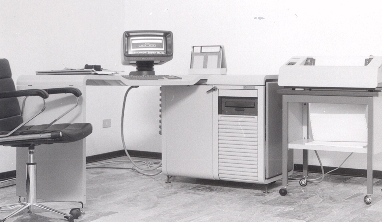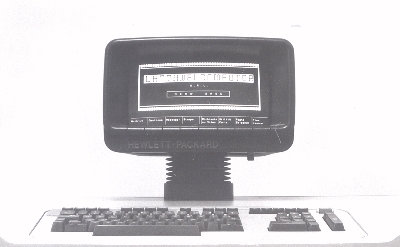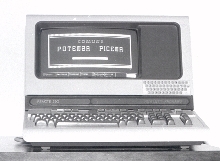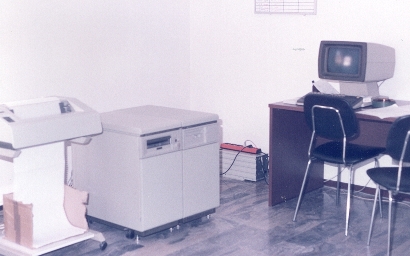|
Once upon a time - back in 1979 - Hewlett-Packard released
a cute little machine: The HP250. Technically a descant of the
HP9845 workstation it was targeted at the commercial market.
First there was "SAM" ...
The original operating system was limited to single user operation.
All data had to reside on up to 3 8" floppy disk drives each capable
to handle a megabyte of data.
Optionally a 10 MB fixed disk or the HP7908 disk drive could be added.
Subsequent OS releases then added support for multi-user operation.

HP250 "SAM" with a HP2631 printer.
The HP250 used a HP proprietary 16 bit processor (similar to the
one used with the HP9845) supporting 192 Kb to 512 Kb of memory.
Peripherals were connected though the HP-IB bus (IEEE488) or serial ports.
The HP250 came with a superior (at that time) and very productive
development environment (based on HP Business Basic and the HP IMAGE
database) and was adpated quickly by VARs which used it to implement
vertical solutions.
It became a moderate success in the US but quite popular in Europe.
The system was designed to be a turn-key system (literally), even
unexperienced users were able to operate it. The key to the upper
left of the floppy drive was used to start or turn off the system.
The original HP250 console was a unique design ("ET").
The system was designed like a desk and the keyboard and monitor
were built into it.
The monitor had funktion keys built into it and the actual function
was explained by screen labels on top of the keys.

HP250 console
By adding memory and a serial board up to 5 terminals
("HP2649D Remote Console") were initially supported
and the HP250 could be used by multiple users.

HP2649D Terminal
The HP2649D terminal was similar to the one used for the HP3000
but used a different firmware.
... then "Samson" and "Delila" ...

HP250 "Delila" with disk drive (27MB) and builtin tape drive,
a HP2622 terminal and the HP2631 printer.
The system name was changed from HP250 to HP260 when the product
was transferred from the US to Europe (B÷blingen, Germany).
... and finally "Panda"
Panda (sorry, no picture for now) was the last HP260 system. It was
discontinued in 1989. A follow-up product was cancelled when Eloquence
became a viable alternative, providing near 100% backward compatibility
on the HP9000 series UNIX systems while going beyond the capabilities
of the original concept.
The beginning of "Eloquence" ...
Eloquence started as a
project back in 1987 to allow porting of HP250/HP260 applications to
the HP-UX environment.
It worked exceptionally well and allowed porting of existing applications
in a matter of hours while removing most of the previous limitations.
Since then Eloquence has gone through continued development.
|


